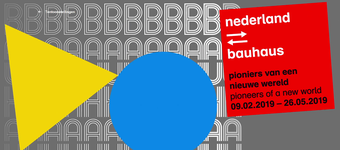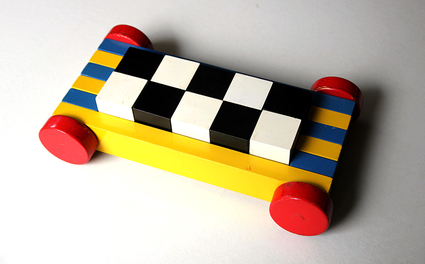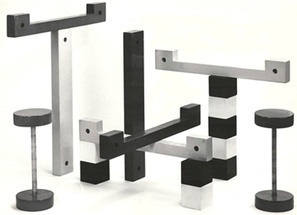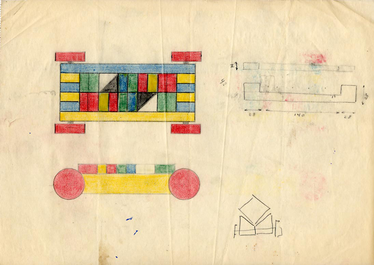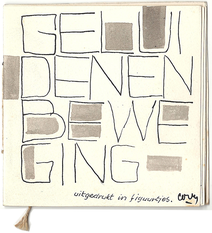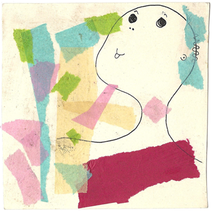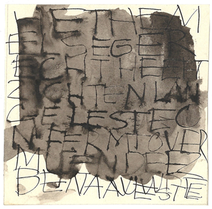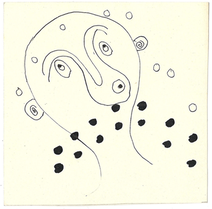Block wagon
Rokus van Blokland attended the new Course for Industrial Design (CIV) in The Hague. It started in 1950, the first time the course was given. Teachers were among others Gerard Kiljan, Cor Alons, Paul Schuitema and Gerrit Rietveld.
The curriculum of this new course was strongly influenced by Bauhaus.
Rietveld asked the class to design toys; 'Toys in which the wrapping is part of the playing'. Rietveld thought in the opposite direction, in contrary to what was prevalent at that time where a toy was packaged in a box that often was discarded and does not become part of the play.
Rokus designed blocks in a wagon (the 'packaging') that could be fully dismantled. The wheels were loose on one side of the axis causing the coloured long blocks to be part of the game. Rokus writes about it: 'A wagon with blocks, if taken apart the long blocks may be used to build along with the other blocks to become a bridge, a roof... And if you stop playing it becomes the wagon again with blocks. You start something and the rest will follow from it.'
The Wooden toy block wagon was, slightly adjusted, taken into production by Sio in 1954.
1949 Sounds and movements
Corry van Blokland Mobach (1929, Amsterdam) enrolled in 1946 in a drawing course at the Royal Academy of Art in The Hague. After that she attended the advertising design and photography course. Teachers were among others Gerard Kiljan, Paul Schuitema, Gerard de Vries, Van de Paardt.
Teacher Van de Paardt gave small recites in his lessons with texts, poems or sounds. The assignment for the students was to depict them directly on paper. Corry used drawing paper, pen, wet brush and coloured transparent paper.
The drawings and collage come from a series of 10, bundled in a booklet.
1952 Labels Sio Blocks
Labels for a serie of blocks boxes in 4 different size.
Rokus van Blokland and Corry van Blokland Mobach designed a label based on the size of the largest box of these boxes.
In the early 1950s, materials were still scarce and printed matter was expensive. Rokus and Corry came up with a way to save costs. The labels were printed in three colours; yellow, cyan and magenta.
Black was printed last and adjusted to the needed size. Finally the labels were cut to size.
